 The Seven Summits are the highest mountains in each of the seven continents.
The Seven Summits are the highest mountains in each of the seven continents. Successfully scaling these mountains is a mountaineering challenge attained by only the strongest. As of 2007, 198 climbers have achieved this expensive and physically demanding goal.
Open water swimming’s version of the Seven Summits is the Oceans Seven.
The Oceans Seven include (1) the Irish Channel between Ireland and Scotland, (2) the Cook Strait between the North and South Islands of New Zealand, (3) the Moloka’i Channel between O’ahu and Moloka’i Islands in Hawaii, (4) the English Channel between England and France, (5) the Catalina Channel in Southern California, (6) the Tsugaru Channel between the islands of Honshu and Hokkaido in Japan, and (7) the Strait of Gibraltar between Europe and Africa.
To the best of our knowledge, no human has yet to complete the Ocean’s Seven.
Achieving the Ocean’s Seven requires an ability to swim in both very cold and very warm seas. It also demands the swimmer is physically and mentally prepared to overcome every condition known to defeat open water swimmers, from strong currents to stiff winds.
Like its mountaineering cousin, the Oceans Seven requires a tremendous amount of planning, time, financial resources and multi-national support teams of knowledgeable local experts.
A description of the Ocean’s Seven follows. Note the distances listed are the shortest straight-line distances from point-to-point, but the actual distance covered by swimmers is significantly greater due to the tidal movements and currents.
1. Irish (North) Channel
• Location: Channel between Ireland and Scotland.
• Reasons for Difficulty: Heavy seas, cold water, thunderstorms and strong currents are among the natural elements that must be overcome in the 33.7K (21 miles) channel.
• Window of Opportunity: July through September.
• Hazards: Considered to be the most difficult channel swim in the world with the water temperature 54ºF (12ºC), normally overcast days, and tremendous difficulty in accurately predicting weather and water conditions. Swimmers face large pods of jellyfish if conditions are calm.
• Description: Has been attempted at least 73 times since 1924, but only 8 successful solo swims and 5 relays have been achieved to date. Most of the attempts have been abandoned due to difficult conditions and hypothermia.
• Additional Information: Swim crossings are governed by the rules set by the Irish Long Distance Swimming Association. First attempt was made in 1924 and the first success was 1947.
2. Cook Strait
• Location: Channel between the North and South Islands of New Zealand.
• Reasons for Difficulty: 16 nautical miles (26K) across immense tidal flows in icy water conditions among jellyfish and sharks are extremely stiff challenges for only the most capable and adventurous swimmers.
• Window of Opportunity: November through May.
• Hazards: 1 in 6 swimmers encounter sharks on their crossings. Sharks only come around to be nosey. No one has ever been attached during a swim. Both sides of the strait have rock cliffs. Cold water (14ºC-19ºC or 57ºC-66ºF) over 26 kilometers and heavy chop.
• Additional Information: To date, only 71 successful crossings have been made by 61 individuals from 8 countries. Hypothermia and change in weather conditions during a race are the most common reasons attempts fail.
3. Moloka’i Channel (or the Kaiwi Channel)
• Location: Channel between the western coast of Moloka’i Island and the eastern coast of O’ahu in Hawaii
• Reasons for Difficulty: 26 miles (41.8K) across a deep-water (701 meters) channel with extraordinarily strong currents in the middle of the Pacific Ocean and aggressive marine life.
• Window of Opportunity: As conditions permit.
• Hazards: Extremely large rolling swells, strong winds and tropical heat and very warm salty water offset the incredibly beautiful views of the Hawaiian Islands and deep-blue underwater scenery.
• Additional Information: Deep-water channel with beautiful views of the Hawaiian Islands was first crossed in 1961 by Keo Nakama in 15 hours and 30 minutes and has only been crossed by 8 individuals to date.
4. English Channel (Channel Swimming or Channel Swimming Association)
• Location: Channel between England and France with the narrowest point being in the Strait of Dover between Shakespeare Beach, Dover, England and Calais, France.
• Reasons for Difficulty: An international waterway of 34K (21 miles) at its narrowest point, cold water temperatures, strong currents and ever-shifting water and weather conditions.
• Window of Opportunity: June to September.
• Hazards: The world’s most famous channel crossing with nearly 1,000 successful swimmers to date, but thousands of failed attempts due to strong currents and tidal flows, strong winds and whitecaps caused by changing conditions and hypothermia.
• Additional Information: Considered to be the standard for channel crossing with the rules and traditions significantly influencing the worldwide open water swimming community.
5. Catalina Channel
• Location: Channel between Santa Catalina Island and Los Angeles, California, U.S.A.
• Reasons for Difficulty: Cold water (especially near coast), strong currents, potential for strong winds, marine life and distance. Shortest point-to-point course is 33.7K (21 miles) from Emerald Bay on Santa Catalina Island to the San Pedro Peninsula.
• Window of Opportunity: June to September.
• Hazards: A deep-water channel that is comparable to the English Channel in terms of water conditions, difficulty, distance and the physical and mental challenges to the swimmer, although the water temperature is a bit warmer (mid-60°F water). Marine life seen on occasion, including migrating whales and large pods of dolphins.
• Additional Information: First successful swim was in January, 1927 when Canadian George Young won $25,000 in the Wrigley Ocean Marathon Swim in 15 hours and 44 minutes.
6. Tsugaru Channel
• Location: Deep-water channel between Honshu, the main island of Japan where Tokyo is located, and Hokkaido, the northernmost island of Japan. Closest points are Tappi Misaki in Honshu and Shirakami Misaki in Hokkaido.
• Reasons for Difficulty: An international waterway, 19.5K (12 miles) at its narrowest point. Swimmers must cross an extremely strong current between the Sea of Japan and the Pacific Ocean, large swells and abundant marine life ranging from sharks to deadly sea snakes. English and other western languages are not spoken in area. Water can be between 62-68ºF (16-20ºC).
• Window of Opportunity: July and August.
• Hazards: Swimmers are swept long distances due to the extraordinarily strong currents flowing from the Sea of Japan to the Pacific Ocean. Swimmers face large blooms of squid during the night. Swimmers are challenged by occasional patches of cold water that flow up from the depths and are caused by the screws of the large oil tankers from the Middle East travel through to the West Coast of the U.S. Only four confirmed solo crossings and one confirmed double-crossing have been achieved to date.
7. Strait of Gibraltar
• Location: Strait between Spain and Morocco that connects the Atlantic Ocean to the Mediterranean Sea. Shortest point is between Punta Oliveros in Spain and Punta Cires in Morocco.
• Reasons for Difficulty: 14.4K (8 miles) across an eastern flow of water from the Atlantic Ocean to the Mediterranean Sea with an average of 3 knots (5.5 km per hour). Heavy boat traffic, logistical barriers and surface chop confront swimmers throughout each attempt.
• Window of Opportunity: June to October.
• Hazards: Its boundaries were known in antiquity as the Pillars of Hercules. The currents remain of Herculean strength. Combined with the unpredictability of the water conditions and high winds, only 185 successful one-way crossings and 7 double-crossings have been made to date.
• Additional Information: Most attempts are made from Tarifa Island due to the influence of strong currents, a distance of 18.5-22K (10-12 miles).
Who will be the first to achieve the Oceans Seven? Who will be the first to try?
Footnote: The Seven Second Summits is another mountaineering term that refers to the second-highest peak of each continent.
What swims might be included in the Ocean’s Second Seven, open water swimming equivalent of the Seven Seven Summits?
A small number of candidate swims might include the Straits of Magellan in Chile, Skagerrak Strait between Norway, Sweden and Denmark, Cape Point and Cape of Good Hope both in South Africa, Lake Baikal in Russia, Beagle Channel between Argentina and Chile, Lake Titicaca from Bolivia to Peru, Gulf of Aqaba (or Eilat) between Egypt, Israel, Jordan and Saudi Arabia, Rottnest Channel in Australia, circumnavigation of Yonaguni Island in Okinawa near Taiwan, Loch Ness in Scotland, circumnavigation of Isle of Wight or the Jersey Island, Lake Tahoe between Nevada and California, U.S.A., Capri to Napoli, Italy, Majorca to Minorca, Spanish Balearic Islands, one of the Santa Barbara Channel in California, U.S.A., crossing of the Five Lakes of Mount Fuji in Japan, Lake Balaton in Hungary or Lac St-Jean in Quebec, Canada, Jeble to Latakia in Syria, circumnavigation of Manhattan Island in New York City, U.S.A., or the Gulf of Toroneos in Greece…although there are innumerable other swims to be discussed, proposed and attempted, but there are others.
Excerpt from the Open Water Swimming Dictionary (English version 2009). Photo of Chris Guesdon of Australia.
Copyright © 2009 by World Open Water Swimming Association



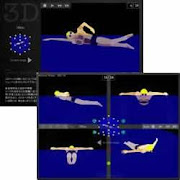

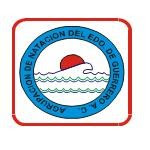

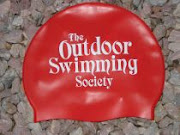




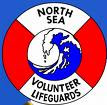
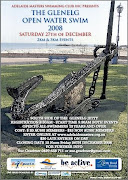





No comments:
Post a Comment